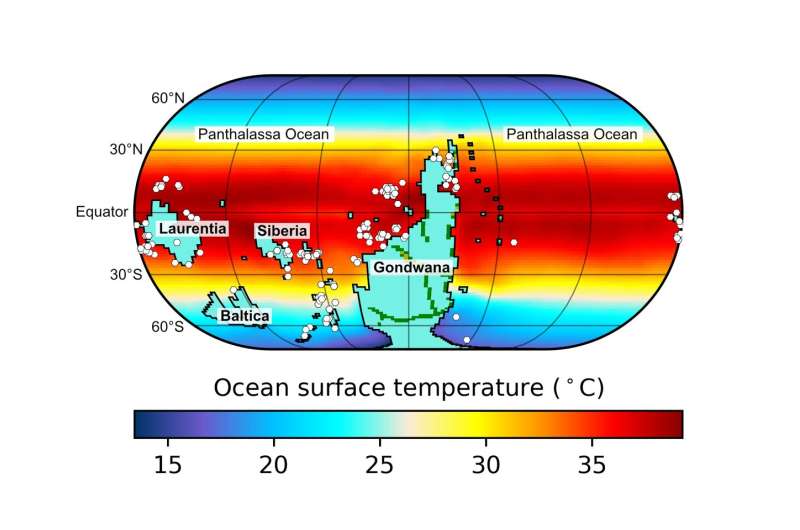Figure 1: Early Cambrian continental arrangement and ocean temperatures, as deduced from the numerical comparison of our global climatic simulations with a database of climatically sensitive sedimentary rocks. White hexagons represent the sedimentary rocks formed during the early Cambrian and preserved today, which served as many “anchor points” to determine the extent to which simulated climate agreed with our current knowledge of early Cambrian climate. Continent names are typeset in bold. Credit: Ghent University
Most animal groups populating our planet today appeared during the early Cambrian (by about 520 million years ago), establishing the animal-rich biosphere we still have today. Despite the biological importance of this time, there are still substantial uncertainties about what Earth was actually like then, in particular the position of the continents and the nature of the climate. These uncertainties persist because most of the techniques used to reconstruct past climatic conditions and to determine the palaeo-positions of the continents are difficult to apply so far back in time. In particular, the further back in time we go, the less rock is preserved, and more likely it is that the physical and chemical properties of the preserved rock will have been altered by geological processes.
Climatically sensitive rocks, such as sedimentary salt (evaporites) and tropical sea deposits (oolitic limestones), only form under certain climatic conditions and are an important source of climate data, independent of the commonly used geochemical methods. In particular, it is much harder to alter the climate signal of a whole rock type than it is to subtly change the climatically sensitive chemistry of that rock. As a result, climatically sensitive rock types provide a greater temporal and paleogeographic coverage of palaeoclimate data than can geochemical proxy data. An interdisciplinary team of researchers from Europe and the U.S. applied, for the first time in the Cambrian, a robust quantitative treatment to a database of climatically sensitive rock types to shed new light on what Earth looked like over 500 million years ago. By comparing global numerical simulations of early Cambrian climate with the database of sedimentary deposits, the researchers determined what combination of climate and continental arrangement best explained the geological database. This numerical approach provides a unique window on planet Earth at the time of the Cambrian explosion (Figure 1).
The numerical results indicate that the Cambrian animal radiation took place in a world with most continental land masses in the Southern Hemisphere and with a climate substantially warmer than today, with mean annual ocean surface temperatures of around 19 degrees Celsius at the poles and 38 degrees Celsius at tropical latitudes. These results show that integrating data and models in a quantitative analytical framework has the potential to substantially refine our understanding of what Earth looked like in the deep past, at least as far back as 500 million years ago.
More information: Thomas W. Wong Hearing et al, Quantitative comparison of geological data and model simulations constrains early Cambrian geography and climate, Nature Communications (2021). DOI: 10.1038/s41467-021-24141-5
Journal information: Nature Communications
Provided by Ghent University























